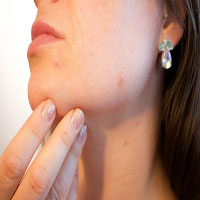Dermatophytes, dermatophytosis in the Caribbean and potential for herbal therapy

Submitted: 27 June 2020
Accepted: 11 August 2020
Published: 21 October 2020
Accepted: 11 August 2020
Abstract Views: 592
PDF: 352
Publisher's note
All claims expressed in this article are solely those of the authors and do not necessarily represent those of their affiliated organizations, or those of the publisher, the editors and the reviewers. Any product that may be evaluated in this article or claim that may be made by its manufacturer is not guaranteed or endorsed by the publisher.
All claims expressed in this article are solely those of the authors and do not necessarily represent those of their affiliated organizations, or those of the publisher, the editors and the reviewers. Any product that may be evaluated in this article or claim that may be made by its manufacturer is not guaranteed or endorsed by the publisher.
Similar Articles
- Harish Gugnani, Kirthika Venkatesan, Erratum - Dermatophytes, dermatophytosis in the Caribbean and potential for herbal therapy , Infectious Diseases and Herbal Medicine: Vol. 2 (2021)
- Bernard K. Turkson, Desmond Nkrumah, Reinhard Isaac Nketia, Alfred Ofori Agyemang, Isaac Kingsley Amponsah, Burnett Tetteh Accam, Merlin L.K. Mensah, Yvonne Boateng, Antimicrobial activity, toxicity and retrospective clinical effectiveness of Kantinka BA and Kantinka Herbaltics, two multi-component-herbal products used in the management of infectious diseases in Ghana , Infectious Diseases and Herbal Medicine: Vol. 5 (2024)
- Siu Kan Law, Is photodynamic therapy with curcumin suitable for combating monkeypox? , Infectious Diseases and Herbal Medicine: Vol. 4 (2023)
- Siukan Law, Licorice and its applications for SARS-CoV-2 , Infectious Diseases and Herbal Medicine: Vol. 3 (2022)
- Shah Mohammad Abbas Waseem, Syed Haider Husaini Mehdi, Novel Coronavirus disease (COVID-19): physiology to pathophysiology and therapeutics including herbal medicines , Infectious Diseases and Herbal Medicine: Vol. 4 (2023)
- Kudzai Fambisai, Petros Muchesa, Farisai Chidzwondo, Rumbidzai Mangoyi, Anti-amoebic effects of selected herbal extracts against Acanthamoeba species isolated from different borehole water samples from Budiriro District in Harare, Zimbabwe , Infectious Diseases and Herbal Medicine: Vol. 5 (2024)
You may also start an advanced similarity search for this article.

 https://doi.org/10.4081/idhm.2020.96
https://doi.org/10.4081/idhm.2020.96



